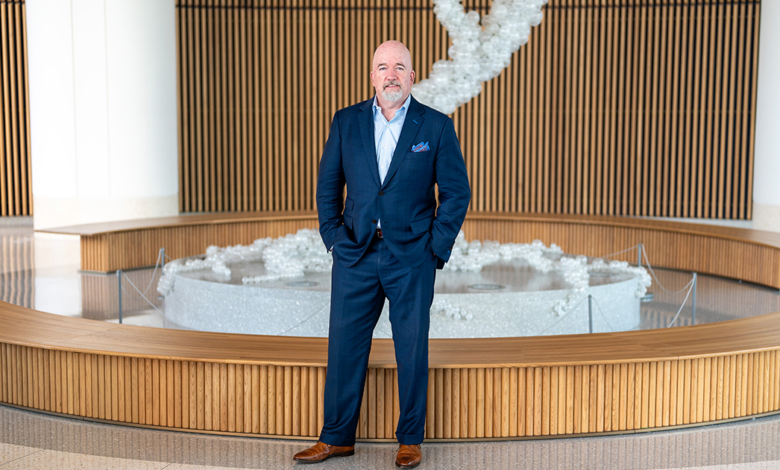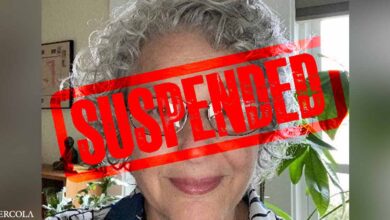What is an entity information officer? And why you may need a few


Entity information officer. This new role marks a significant development in healthcare information technology at hospitals and health systems.
What, you ask, is an entity information officer? One of the best people to answer the question is John P. Donohue, vice president of IS entity services at Penn Medicine Information Services, part of Philadelphia, Pennsylvania-based health system Penn Medicine.
Donohue is responsible for leading the entity services group, which includes numerous seasoned technology executives, as well as the onsite teams that support Penn Medicine’s many entities. These entity technology groups are responsible for managing the business and facilitating the technology relationship between operations and information services.
Each entity group consists of an entity information officer and resources that support clinical engineering, platforms and network technology at the entities. Additionally, John was the information services executive driving technology innovation for the construction of the new patient pavilion.
Healthcare IT News sat down with Donohue to get an in-depth look at what he does, so other hospital and health system leaders can understand why they may need an entity information officer.
Q. What are entity services? Where did the concept come from? Have you come across many hospitals and health systems dealing with entity services as Penn Medicine does?
A. Entity services is a group within our corporate information services team that focuses on the information services needs of the Penn Medicine entities. There are several entities across the Penn Medicine enterprise. Each of our inpatient hospitals is considered an entity.
There also are other entities. For example: The Perelman School of Medicine, corporate itself (finance, marketing, human resources, etc.), our physician groups, some key service lines, and home care/hospice. The entity services group comprises more than 250 professionals and leaders that deliver the following services: biomedical engineering, edge device and networking support.
Each entity group is led by an entity information officer (EIO) – or mini-CIO. The EIO has a dotted line relationship to that entity’s COO and a solid line up through my organization. The EIO ultimately is responsible for developing and managing the local business and clinical relationships, as well as helping to translate business and clinical requirements to standardized information services.
Our CIO developed this approach to leading about 10 years ago as the health system was growing. We have matured the program and the role over time, and it has been instrumental in onboarding and managing our relationships with entity leadership personnel.
We have been able to staff these EIO roles with CIOs from small community hospitals, and from Penn Medicine internally developed folks who are ready for their first executive role.
I have worked with a few organizations that have a similar model, but not many. Most of them are in the nascent stage of developing the concept and have not yet had a chance to mature the role enough to maximize the potential. I encourage them to come and talk to us about what has worked and where we think future opportunities lie.
Q. You are the vice president of IS entity services and an entity information officer. Please describe your job and how you interact with the C-suite and other executives and clinicians.
A. As the vice president of IS entity services, my role is to oversee the entire IS entity organization. We currently have three associate CIOs (ACIOs) who report directly to me. Each of these ACIOs have several EIOs that report to them. Each EIO has several managers reporting to them who are embedded at the entities with their associated staff.
The EIOs have offices at their respective entity, so they can better understand the specific needs of each entity and can build strong relationships with the entity leadership team – the C-suite at each entity. As you can imagine, some entities are larger and more complex, and therefore have a larger IS entity team reporting up through the EIO.
I spend a significant amount of my time with the administrative aspects of the entity team. I tend to focus heavily on recruiting, development and retention of our entity team. This has served us very well. Our turnover is typically below 5%, and that retention allows us to deliver a high level of services consistently.
As such, we have been able to grow what we support over time without adding a significant number of new staff. I have been with Penn Medicine more than 20 years at this point. I work with our CIO and other IS executives to ensure we have a cohesive culture that serves our world class health system.
As a direct report to our CIO, I also spend a significant amount of time working to develop and execute on the IS strategy. This includes onboarding and mentoring key staff members, developing and managing a large operating and capital budget, and working to maintain the culture of accountability within IS at Penn Medicine. We have a very strong record of operational excellence and project execution.
Lastly, I maintain a relationship with the bulk of the executive leadership team here at Penn Medicine. This includes the corporate leaders, as well as key leaders at the entities. These relationships allow for a “One Penn Medicine approach” and a focus on prioritization across the enterprise. My goal is to spend at least one day each month with each entity.
This can be anything from a meeting with leadership to walking the floors with technicians and engineers in clinical and business locations. My time with the C-suite and other executives at Penn Medicine helps me stay abreast of challenges and opportunities and then ensure the entity services team is aligned properly with the organization’s priorities.
Q. You described entity services to me as customer relationship management, but internal. Is this a good way for others unfamiliar with the concept to look at it? What does entity services share with CRM?
A. I do think one of the key aspects of the entity services team is the management of the relationships with the key entity leaders. My CIO likes to say the three main roles of an EIO is “follow-up, follow-up and follow-up.”
We are at our best when we are on top of the priorities, aligned with the enterprise and the entity and executing at scale. This is all made possible by strong and trusting relationships with the leaders at the entities. In the old days, IBM had a role called business relationship manager. I like to think what we do best is manage those relationships and ensure our finite IS resources are working with operations to move the needle.
Part of this is translating the needs of the entity, understanding what our enterprise technology standards are and looking for ways to leverage the platforms we own. At the end of the day, if we are doing our job right, we are helping our senior leaders maintain a harmonized Penn Medicine.
Q. What benefits does entity services provide? What are soft and hard outcomes? How does the entity services organization enhance information services for the end users?
A. I have talked a little about this. As we look for economies of scale, and are leveraging standard platforms for cost optimization, the entity services team plays a pivotal role. They live at the entities, and best understand what initiatives help move the needle.
The EIO plays the role where they advocate for the entity at the corporate IS level and advocate for corporate IS at the entity level. The outcomes typically are demonstrated by the ability to standardize, and strong two-way communications with the entities, where the right expectations are established.
We really push for a “One Penn Medicine” approach to systems, and when the EIOs are effective, the entities are aligned with standards, and are not pursuing other systems and platforms.
The EIOs typically serve as a strong liaison between entity operations and corporate IS as systems are being implemented. This ensures both operations and information services have skin in the game. This has been pivotal to our success, as both organizations are highly invested in a positive outcome.
We often pitch in when operations are behind on something and operations pitches in when we are behind. It is a very effective approach to implementing systems. Once the systems are live, the EIOs and their staff focus on operational support. Most of this support is directed to the technology that lives at the site – mostly edge devices.
However, the EIOs are strong advocates for additional corporate support when needed to optimize systems.
Q. What would you advise your peers at other hospitals and health systems interested in getting into entity services and naming a top executive like you to lead them?
A. I do think this model works – particularly for health systems with multiple hospitals and complex service lines. Like most things that are successful, it’s all about the people. We have hand-selected our EIOs. They are seasoned leaders who understand both hospital operations and IT. Most IT organizations have people like this already who are prime for a stretch assignment.
I do think it is important to ensure the right expectations are set between operations and the EIOs. They serve in a delicate balance where they must keep both camps happy and make tough decisions and recommendations.
In terms of naming the top executive for a team like this, I think you really need someone who understands the culture of your organization, has strong operational relationships, and is broadly trusted as keeping the organization’s best interests in mind.
I spent many years as an infrastructure executive, served as our chief information security officer for several years and led global applications at another organization. This experience has served as a nice background for leading an entity-based IS organization.
(Donohue has written several blogs for Healthcare IT News over the years that can be found by clicking here.)
Follow Bill’s HIT coverage on LinkedIn: Bill Siwicki
Email him: [email protected]
Healthcare IT News is a HIMSS Media publication.




